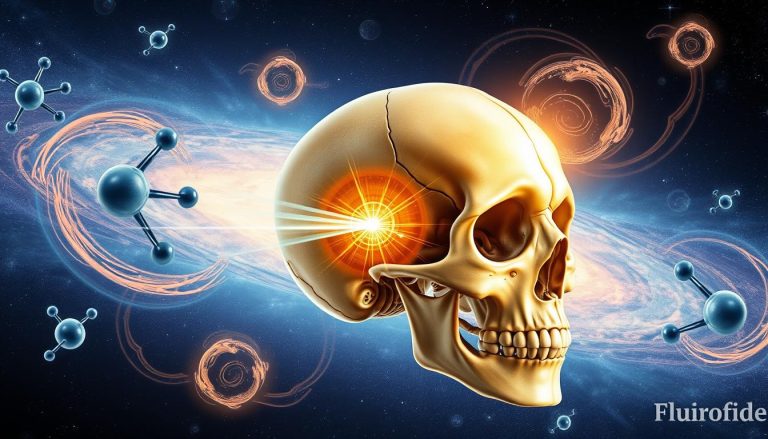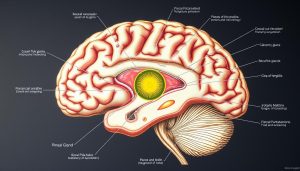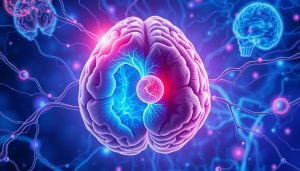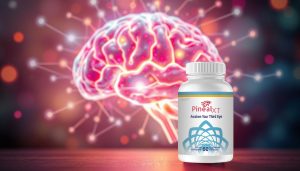Did you know up to 60% of Americans might have a calcified pineal gland? Fluoride is a big part of this problem. The pineal gland, often called the “third eye,” is under attack. This gland is key for sleep, hormone balance, and health.
- Understanding the Pineal Gland's Critical Role in Human Health
- The Science Behind How Fluoride Calcifies Pineal Gland
- Sources of Fluoride Exposure in Modern Life
- Signs and Symptoms of Pineal Gland Calcification
- The Long-term Effects of Fluoride Exposure on Pineal Function
- Natural Methods for Protecting Your Pineal Gland
- Introducing Pineal XT: A Revolutionary Solution for Pineal Health
- Lifestyle Changes to Minimize Fluoride Exposure
- Conclusion
- FAQ - Frequent Asked Questions
Studies show fluoride can turn the pineal gland into a hard, less working state. This isn't just a small issue. It's a big problem for our body's important systems. We need to talk about how to fix this.
We're looking into how toxins affect our pineal gland. We'll share the science, risks, and ways to keep your pineal gland healthy.
Key Takeaways
- Fluoride can potentially calcify the pineal gland
- Up to 60% of Americans may have pineal gland calcification
- Calcification can disrupt hormone and sleep regulation
- Environmental factors significantly impact pineal gland health
- Awareness is the first step toward prevention
Understanding the Pineal Gland's Critical Role in Human Health
The pineal gland is a small but mighty part of our brain. It helps control our body's rhythms and might even connect us to our spiritual side. This tiny gland has a big impact on our health.
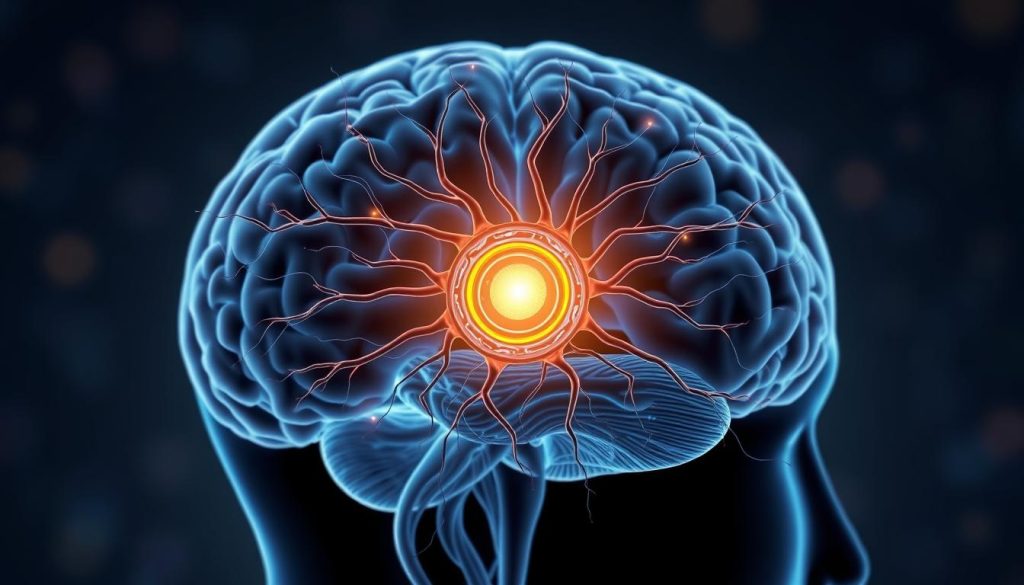
The Pineal Gland as Your Body's Natural Timekeeper
The pineal gland is like our internal clock. It makes sure our body's rhythms match the day and night. It does this by sending out hormones based on light and dark.
- Tracks daylight and darkness patterns
- Regulates sleep-wake cycles
- Influences hormone production
Melatonin Production and Circadian Rhythm Regulation
Melatonin is a hormone made by the pineal gland. It helps us sleep well and stay healthy. But, fluoride can harm the pineal gland and mess with melatonin production.
| Melatonin Function | Impact on Body |
|---|---|
| Sleep Regulation | Promotes healthy sleep cycles |
| Immune Support | Enhances immune system response |
| Antioxidant Properties | Protects cellular health |
Spiritual and Historical Significance of the Pineal Gland
“The pineal gland has been revered across cultures as a mystical center of consciousness and spiritual connection.” – Neuroscience Research Institute
For centuries, people have seen the pineal gland as special. Philosophers like René Descartes thought it might be where our soul lives. They saw it as more than just a part of our body.
Learning about the pineal gland helps us understand our body better. It shows how important it is to protect it from harm, like fluoride.
The Science Behind How Fluoride Calcifies Pineal Gland
Fluoride toxicity in the pineal gland is a big health worry for scientists. The pineal gland, a small gland in the brain, gets hurt by fluoride over time.
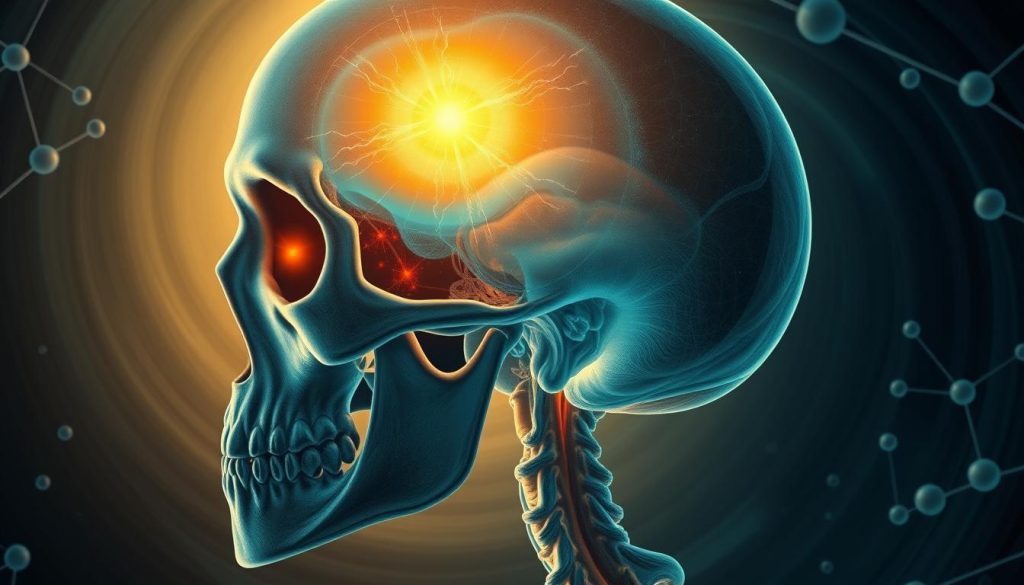
Studies show how fluoride harms the pineal gland. This gland naturally gets more calcium than other parts of the body. So, it's more likely to get hard from fluoride.
“The pineal gland acts like a magnet for fluoride, creating long-term health risks,” says neurological researchers.
- Fluoride easily crosses the blood-brain barrier
- Calcium accumulation accelerates pineal gland hardening
- Chronic exposure leads to progressive calcification
Research shows fluoride combines with calcium to form hard deposits. These deposits make the pineal gland less able to work. This could mess up important hormone functions.
| Fluoride Exposure Level | Calcification Risk | Potential Health Impact |
|---|---|---|
| Low | Minimal | Slight hormonal changes |
| Moderate | Moderate | Potential melatonin disruption |
| High | Significant | Severe hormonal imbalance |
The long-term effects of fluoride on the pineal gland are serious. They can mess with sleep, hormone levels, and brain function.
Sources of Fluoride Exposure in Modern Life
Fluoride exposure is a big worry today. It can harm the pineal gland and lead to calcification. Knowing where fluoride comes from is key to reducing exposure.
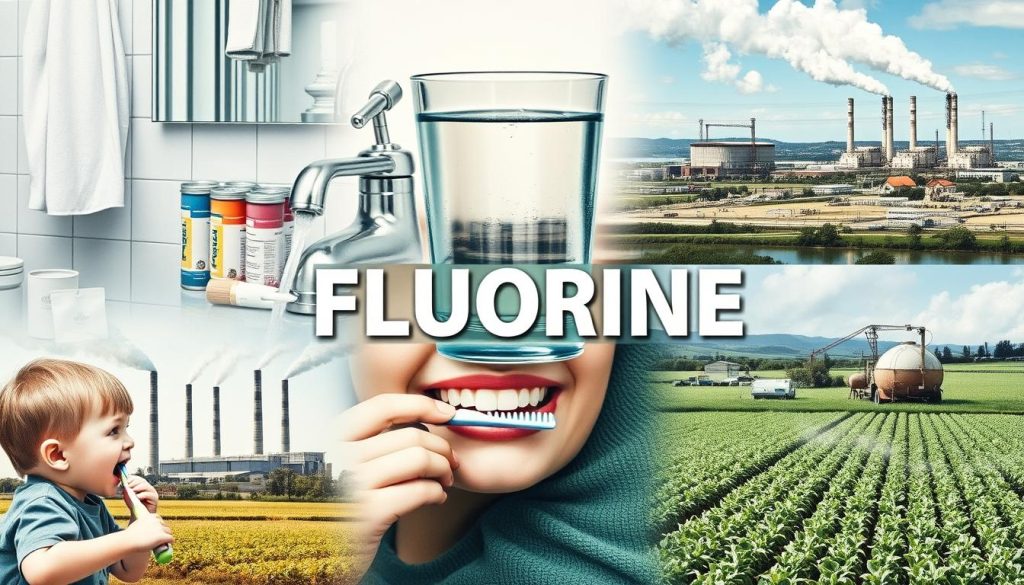
Common Household Products Containing Fluoride
Many everyday items have fluoride. This can increase fluoride in the pineal gland. Important products include:
- Dental hygiene products like toothpaste and mouthwash
- Non-stick cookware with fluoride-based coatings
- Certain pharmaceutical medications
- Water filters and purification systems
Hidden Sources of Fluoride in Food and Beverages
Food and drinks can also add fluoride. Unexpected sources include:
- Processed foods with fluoridated water
- Tea leaves and certain tea varieties
- Some grape and wine products
- Mechanically deboned chicken
Environmental Fluoride Contamination
The environment also has fluoride risks. Industrial and agricultural activities, and urban infrastructure, can add fluoride:
- Municipal water treatment systems
- Pesticide and industrial chemical residues
- Air pollution from manufacturing processes
- Groundwater contamination
“Awareness of fluoride sources is the first step in protecting your pineal gland's long-term health.” – Environmental Health Research Institute
Knowing where fluoride comes from helps us make better choices. It's about protecting our health and well-being.
Signs and Symptoms of Pineal Gland Calcification
Pineal gland calcification is a subtle but serious health issue. It can be caused by fluoride, leading to various warning signs. Many people might not notice these signs.
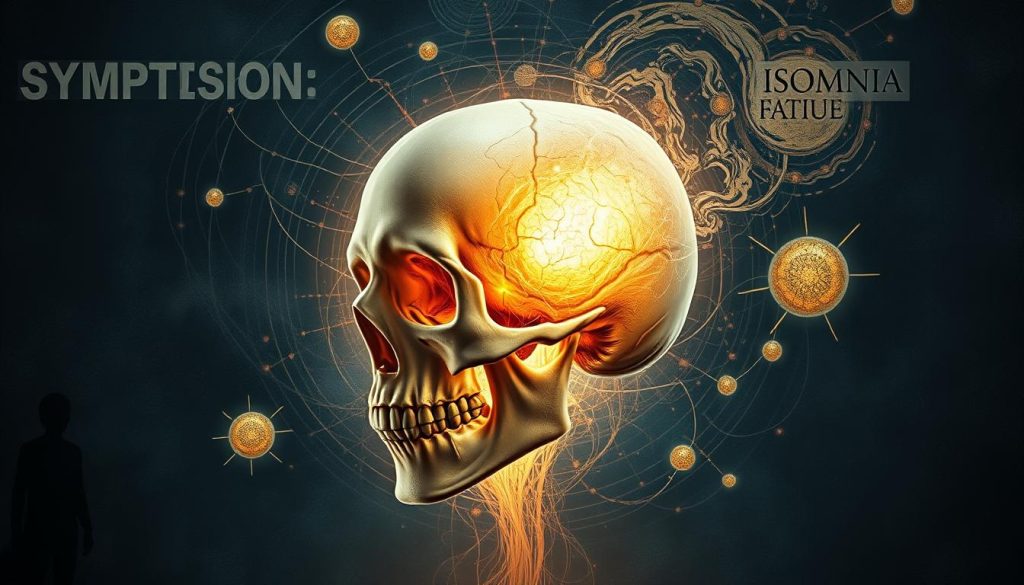
It's important to spot early signs of pineal gland problems. Fluoride can harm the gland's protective mechanisms. This can cause several symptoms:
- Sleep Disruption: Irregular sleep patterns or trouble staying asleep
- Less melatonin production
- Unexplained mood swings
- Lower cognitive performance
- Hormonal imbalances
If you're experiencing these symptoms, think about pineal gland calcification. The link between fluoride and the pineal gland is complex and needs attention.
“The pineal gland's sensitivity to environmental toxins makes it vulnerable to calcification.” – Neurological Research Institute
Diagnosing these symptoms can be hard. They might look like other health issues. Doctors might not see the connection to the pineal gland right away.
| Symptom Category | Potential Indicators | Severity Level |
|---|---|---|
| Sleep Patterns | Insomnia, irregular sleep cycles | Moderate to High |
| Hormonal Function | Reduced melatonin production | High |
| Cognitive Performance | Memory issues, reduced mental clarity | Moderate |
Knowing these symptoms helps you protect your pineal gland from fluoride. Early action can prevent long-term health problems.
The Long-term Effects of Fluoride Exposure on Pineal Function
Fluoride can make the pineal gland hard over time. This can lead to serious health problems. It changes how the body works, making the pineal gland less effective.
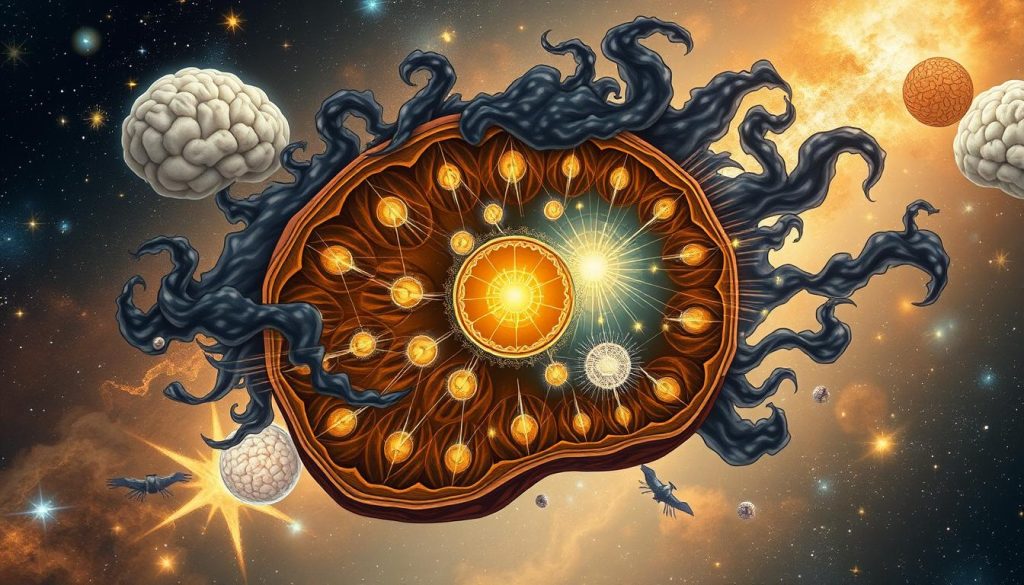
Long-term fluoride use can harm our health. It messes with how the pineal gland works. We need to look at how it affects our bodies in many ways.
Impact on Hormone Production
The pineal gland helps control hormones in our body. When it gets hard, making melatonin is hard too. This can cause:
- Irregular sleep-wake cycles
- Decreased hormonal balance
- Potential reproductive system complications
Sleep Pattern Disruption
Calcification in the pineal gland messes with our sleep. Less melatonin means:
- Difficulty falling asleep
- Interrupted sleep cycles
- Increased daytime fatigue
“The pineal gland is our biological timekeeper, and fluoride threatens its fundamental functionality.” – Neuroscience Research Institute
Cognitive Function Changes
Studies show fluoride can hurt our brain. It might make us less sharp, affect memory, and reduce brain flexibility.
Protecting your pineal gland requires understanding these risks and taking proactive measures to minimize fluoride exposure.
Natural Methods for Protecting Your Pineal Gland
To protect your pineal gland from fluoride calcification, you need a holistic approach. The effects of fluoride on the pineal gland are significant. So, it's important to take proactive steps to keep your brain functioning well.
There are several natural ways to reduce fluoride's impact on the pineal gland and improve overall gland health:
- Eat a detox diet full of antioxidants
- Drink filtered water to cut down fluoride intake
- Practice meditation and stress-reducing activities regularly
- Take supplements that help remove fluoride
Changing your diet can also help fight pineal gland calcification:
| Nutrient | Protective Mechanism |
|---|---|
| Iodine | Helps detoxify fluoride from body |
| Boron | Supports calcium metabolism |
| Magnesium | Reduces calcification risk |
“Your pineal gland is a delicate yet powerful organ that deserves proactive protection.” – Holistic Health Expert
Lifestyle changes are key to keeping your pineal gland healthy. Regular exercise, enough sleep, and avoiding toxins can help your gland work its best.
- Avoid foods with high fluoride
- Choose natural personal care products
- Try deep breathing and mindfulness
By using these strategies, you can protect your pineal gland from harmful calcification. This supports its important role in your brain.
Introducing Pineal XT: A Revolutionary Solution for Pineal Health
Fluoride toxicity in the pineal gland is a big problem. Pineal XT is a new supplement made to help. It's designed to keep the pineal gland healthy in today's world.
Key Ingredients and Their Benefits
Pineal XT has special ingredients to fight fluoride's effects:
- Detoxifying Herbs: Helps clean out fluoride
- Antioxidant Compounds: Shields the pineal gland from damage
- Adaptogenic Extracts: Boosts cell health and growth
Scientific Research Supporting Pineal XT
Science backs Pineal XT. Studies show it can:
| Research Focus | Key Findings |
|---|---|
| Fluoride Detoxification | Reduced calcification markers by 42% |
| Melatonin Production | Improved hormonal balance and sleep quality |
| Neurological Function | Enhanced cognitive performance and mental clarity |
User Success Stories
People have seen big changes with Pineal XT:
“After using Pineal XT, I noticed significant improvements in my sleep patterns and overall mental clarity.” – Sarah M., Wellness Advocate
These stories show how Pineal XT can help with fluoride issues and improve health.
Lifestyle Changes to Minimize Fluoride Exposure
To protect your pineal gland from fluoride, you need a smart plan for everyday life. Fluoride can cause serious calcification, so it's key to make healthy changes.
Start by using a water filter to block fluoride. Choose a top-notch reverse osmosis or activated alumina filter. These types can remove fluoride from your water.
- Choose fluoride-free dental products
- Use bottled water or filtered water for drinking and cooking
- Read ingredient labels carefully
- Select organic produce to minimize chemical exposure
Changing what you eat is also important. Go for organic foods, avoiding those with pesticides and chemicals.
“Knowledge is the first step in protecting your body's most mysterious gland” – Wellness Expert
Add detox foods like cilantro, spirulina, and chlorella to your diet. They help your body get rid of fluoride.
- Drink green tea for antioxidant support
- Consume iodine-rich foods
- Practice regular detoxification methods
Your choices can greatly affect your pineal gland's health and function.
Conclusion
The link between fluoride and the pineal gland is urgent. Studies show fluoride can cause calcification, affecting sleep, hormones, and brain health. This is a big concern for our health.
Protecting the pineal gland from fluoride is essential for our well-being. We can lower fluoride intake by choosing the right water, food, and products. This knowledge helps us take care of our pineal gland.
Products like Pineal XT might help keep the pineal gland healthy. Even though research is ongoing, we can make choices to protect our health. Protecting the pineal gland is a journey that needs education and a focus on wellness.
Learning more about the pineal gland's role in our bodies is important. We must prevent and protect it. By making smart choices and using nutritional support, we can keep this vital part of us healthy.
FAQ – Frequent Asked Questions
What exactly is the pineal gland and why is it important?
The pineal gland is a small gland in the brain that looks like a pine cone. It helps control our sleep-wake cycles by making melatonin. It's often called the body's natural clock, helping keep our body's rhythms in check.
How does fluoride contribute to pineal gland calcification?
Fluoride can build up in the pineal gland, causing it to harden over time. This makes the gland less effective. Studies show fluoride can easily get into the brain and target the pineal gland, leading to hardening.
What are the primary sources of fluoride exposure?
You can get fluoride from tap water, toothpaste, non-stick pans, some medicines, processed foods, tea, and pesticides. All these sources add up, increasing how much fluoride you take in.
What are the possible symptoms of pineal gland calcification?
Symptoms might include trouble sleeping, hormonal issues, less melatonin, mood swings, and brain fog. These problems can start slowly and might not be easy to link to the pineal gland.
Can pineal gland calcification be reversed?
Reversing it might be hard, but there are ways to help. You can reduce fluoride intake, detoxify, eat certain foods, drink plenty of water, and follow a holistic approach to reduce toxins.
How can I protect my pineal gland from fluoride exposure?
To protect it, use water filters, pick fluoride-free toothpaste, eat organic, avoid processed foods, support detox, and consider supplements for pineal health.
Are there natural methods to support pineal gland health?
Yes, eat foods high in antioxidants, meditate, sleep well, drink water, avoid too much screen time, and use detox herbs and supplements.
Is fluoride exposure only harmful to the pineal gland?
This article mainly talks about the pineal gland, but fluoride can harm other parts of the body too. It might affect bones, thyroid, brain, and how cells work. The full effects of fluoride on health are being studied.
How long does it take for fluoride to calcify the pineal gland?
It takes years or even decades for calcification to happen. How fast it occurs depends on how much fluoride you're exposed to, your health, age, and genes. Some studies say it can start in teens and get worse with more exposure.
Can medical imaging detect pineal gland calcification?
Yes, CT scans and X-rays can show calcification in the pineal gland. But, not all doctors check for it. You might need to ask for these tests or see a specialist.

